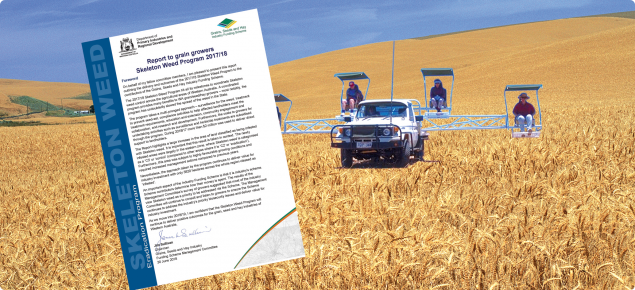Foreword
On behalf of my fellow committee members, I am pleased to present this report outlining the delivery and outcomes of the 2017/18 Skeleton Weed Program to the contributors of the Grains, Seeds and Hay Industry Funding Scheme.
The 2017/18 Skeleton Weed Program hit all its milestones to coordinate Skeleton weed control across the agricultural areas of Western Australia. A coordinated program provides many benefits to WA grain/seed/hay growers – most notably, the program has undoubtedly slowed the spread of the weed in the State.
The program takes a multi-pronged approach – surveillance for the weed, treatment to prevent seed-set, compliance activities to help affected landholders meet the treatment requirements, education and extension, community engagement and collaboration, and research and development. Furthermore, the costs to growers for undertaking activities such as surveillance and herbicide treatments are subsidised through the program. During 2018/17 more than $2 million was used to deliver direct support to landholders.
The Report highlights a large increase in the area of land classified as being infested with Skeleton weed. It is important that this result is taken in context. The newly infested areas were largely in the eastern zone, where Skeleton weed is categorised as a ‘C3’ or ‘control’ (compared to other areas where it is ‘C2’ or ‘eradication’). Furthermore, this area was subject to highly favourable growing conditions and required increased management actions compared to previous years.
Nevertheless, the approach taken by the program continues to deliver value for industry investment with only 3820 hectares across the whole region classed as ‘infested’.
An important aspect of the Industry Funding Scheme is that it is industry’s scheme. Scheme contributors determine how their money is spent. The results of the Management Committee’s survey of growers suggested that most of the industry view Skeleton weed as a priority to be addressed via the Scheme. The Management Committee will continue to consult and listen to growers to ensure the Scheme continues to address the industry’s priority biosecurity issues and deliver value for industry investment.
As we move into 2018/19, I am confident that the Skeleton Weed Program will continue to deliver positive outcomes for the grain, seed and hay industries of Western Australia.
Jim Sullivan
Chairman
Grains, Seeds and Hay Industry
Funding Scheme Management Committee
30 June 2018
Review
The Grains, Seeds and Hay Industry Management Committee (GSHIMC) believes the current program is delivering the best value for the funding provided and is achieving the Project Outcomes of eradication (where possible), management (on infested sites), and limiting the spread of Skeleton weed across the cereal growing districts.
There has been a significant increase in the infested area of Skeleton weed in 2017/18. Most of this increase was in the eastern zone where wet conditions favoured Skeleton weed in late 2017.
Many landholders in these areas also had difficulty achieving “long term” control over summer and infested areas needed monitoring and several applications of herbicide. This issue has been addressed and additional options are available to help in the future (see planned improvements).
| All program milestones have been met and the program has been delivered under budget. |
Program milestones
- Winter treatment of Skeleton weed infestations, including supply and application of herbicide
- Review and provide Skeleton weed information packages (Management Guide)
- Pre-search planning and notification to affected landholders
- Surveillance for Skeleton weed on high risk non-infested properties
- Undertake monitoring on paddocks released from infested list in C2 areas
- Conduct audits of infested properties and follow up compliance
- Update records for annual summer search in project database
- Annual Skeleton Weed Program debrief
- Operational plans and budgets completed and approved by GSH IMC
- Funding for Local Action Groups – applications assessed and funding facilitated
- Skeleton Weed Program “Report to grain growers”
Program expenditure
The total cost of the 2017/18 Program was $3.45M (as at 30 June 2018), $170 000 under the budgeted amount of $3.62M. $2.14M was allocated directly to landholder support in the form of search assistance, funding for six Local Action Groups and winter herbicide treatments (Table 1). A further $1.31M was directed to program support and operational activities such as research, education, regulation and surveillance.
The cost of undertaking surveillance and control within the Perth metropolitan area is more than offset by revenues raised through charging land managers (on a fee for service basis) for work undertaken.
Table 1 Program expenditure 2017/18
| Operational expenditure |
|
|---|---|
| Program support activities |
|
| Program operations, coordination, audit and compliance | $775 000 |
| Education and awareness | $34 000 |
| Targeted surveillance searching (including metro area) | $150 000 |
| Field research | $45 000 |
| Contribution to DPIRD in-kind support | $306 000 |
| Program support total | $1 310 000 |
| Direct landholder support |
|
| Local Action Group support | $740 000 |
| Provision for landholder searching subsidies | $1 176 000 |
| Infested property support activities | $160 000 |
| Winter spraying - chemical supply (DPIRD) | $64 000 |
| Landholder support total | $2 140 000 |
| Total expenditure | $3 450 000 |
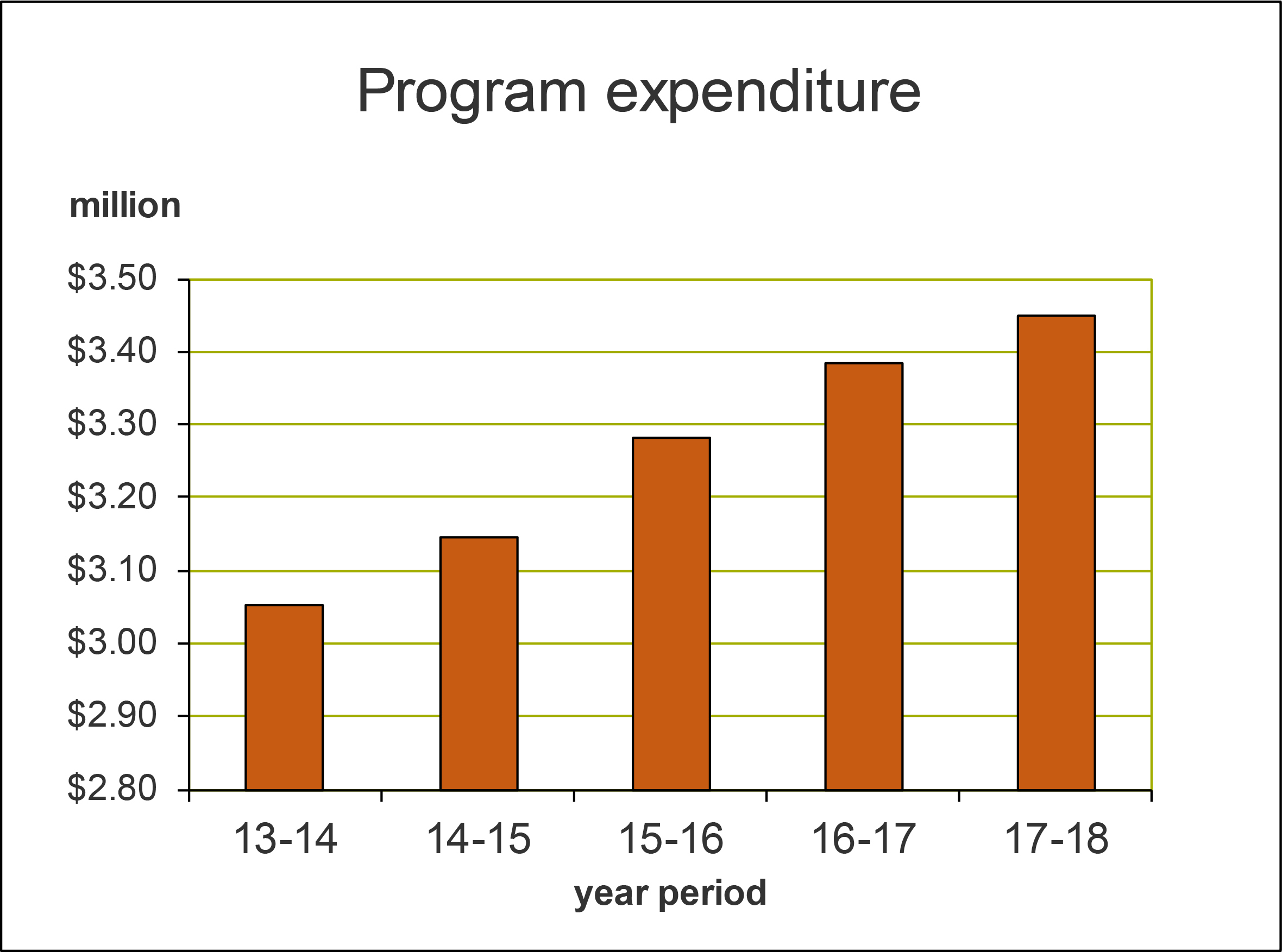
Figure 1 Program expenditure over 5 year period
Recent improvements
Continuous improvement remains an important part of the Skeleton Weed Program’s ongoing development and effectiveness.
Significant refinements were made to the delivery of the program in 2017/18 including to the shires where Skeleton weed is categorised C 3 (Management) into the “Winter spraying assistance” program. This now brings the Yilgarn and Narembeen shires back in line with the rest of the state.
All “Landholder assistance” programs are now consistent across the grain growing areas in WA.
Compliance
Audit and compliance remain a strong focus of the program. With a significant part of the surveillance work now being done with Unmanned Aerial Vehicles (UAV) technology, the Department of Primary Industries and Regional Development (DPIRD) and LAGs should have more time to devote to compliance. Protocols are now in place for Organic enterprises. These were completed in consultation with the main organic grower certification authorities and offer these growers alternatives to address compliance. Overall, the vast majority of landholders are compliant and embrace the requirements of the program.
During the 2017/18 season a small group of infested and newly infested properties required some level of compliance. All of these properties returned to the approved program requirements. This was accomplished by discussions generally between local biosecurity officers and the senior compliance inspector who advises on how to best achieve compliance. The main focus of the Skeleton Weed Program is on assisting landholders and working with them to eradicate Skeleton weed.
Perth metropolitan area
Surveillance in the Perth area was conducted in early December 2017 and February 2018. Winter treatment of the 2016/17 infested sites was undertaken in July 2017 and treatment of 2017/18 sites was undertaken in July 2018.
All managers of infested sites must conduct searching for (and treatment of) Skeleton weed at their cost or contract DPIRD to undertake the work on a fee-for-service basis, on behalf of the GSHIMC. The current fee-for-service arrangement remains the preferred option for most metropolitan area landholders. The fee-for-service charges of “metro” sites have now been brought into line with the broad acre Skeleton weed season (October to October).
Those land managers who chose to undertake the management themselves were required to report on their activities and were subject to audits in December and February.
New sites continue to be reported or found and awareness is improving, particularly with local governments. The Program has strong support from the City of Cockburn and City of Wanneroo in particular.
Although new sites have been listed, many of the current sites have significantly reduced plant numbers, and some sites have been removed from the infested list.
Lake Coogee and the Water Corporation sites at Henderson have improved significantly presenting about 80% reduction of the initial infestation recorded in 2008.
Local Action Groups
Six Local Action Groups (LAGs) (Bruce Rock, Kellerberrin and Corrigin; Avon North; Lakes, Narembeen; Nungarin, Trayning; Mukinbudin and Mt Marshall; and Yilgarn) were funded by the program during 2017/18, receiving a total of
$740 000. Additional funds were provided to enable LAGs to take on more operational activities, allowing DPIRD staff to focus on compliance and coordination of the program.
The development of LAGs to undertake the program’s operation activities in some areas has been very successful. All LAGs are now working autonomously and undertaking almost all tasks previously completed by DPIRD exclusively. LAGs may purchase chemical in their area provided the cost is within 10% of the price the Program Project Manager can obtain for the same chemical.
DPIRD remains the compliance management authority and all compliance requirements are met by DPIRD accordingly.
Industry Funding Schemes
The Skeleton Weed Program continues to operate under the Biosecurity and Agricultural Management Industry Funding Scheme (Grains) Regulations 2010. Responsibility for approving the funding and operations of the program reside with the Grains, Seeds and Hay Industry Management Committee (GSHIMC) initially appointed by the Minister in June 2010.
The GSHIMC met in April 2017 and approved the programs for the control of Skeleton weed and the eradication of three-horned bedstraw on behalf of the WA grains industry. The committee recommended a contribution rate on grains, seeds and hay be reduced to 25 cents (down from 30) per tonne for grain and 12.5 cents (down from 15) per tonne for hay. These funds are used to support the Skeleton Weed and Bedstraw Programs, with Skeleton weed allocated 90% of the funds collected.
The reduced contribution rate reflects the higher than average amounts collected over the last few years and the willingness of the committee to respond to this and decrease the burden on landholders, when possible.
All contributions to the scheme are collected by purchasers of grain and hay and are paid into a Grains, Seeds and Hay Industry Funding Scheme, Declared Pest Control and Compensation Account, which is managed by DPIRD in consultation with the Grains Industry Management Committee.
Research
The Program has been working closely with the private sector on the potential use of Unmanned Aerial Vehicles (UAVs) for the detection of Skeleton weed over the past three years. Significant progress is being made in this and we now have proof of concept and progression towards UAVs being used to undertake surveillance searching for Skeleton weed.
To date, we now have an effective, suitable platform to undertake the flying and promising development on image recognition software. Further field development was undertaken in December 2017 and is continuing in 2018.
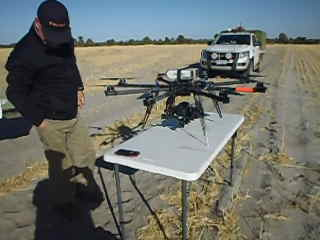
The Skeleton Weed Program will be using UAVs to undertake (up to) 20 000ha of surveillance searching in the 2018/19 search season.
Extension and awareness
The program has increased its extension effort over 2017/18. There has been a strategic and extensive extension campaign incorporating radio community service announcements and press releases to coincide with the start of the summer search season (November/December 2017). This was very well received and has greatly raised the recognition and profile of Skeleton weed. We will certainly be doing this again in 2018/19.
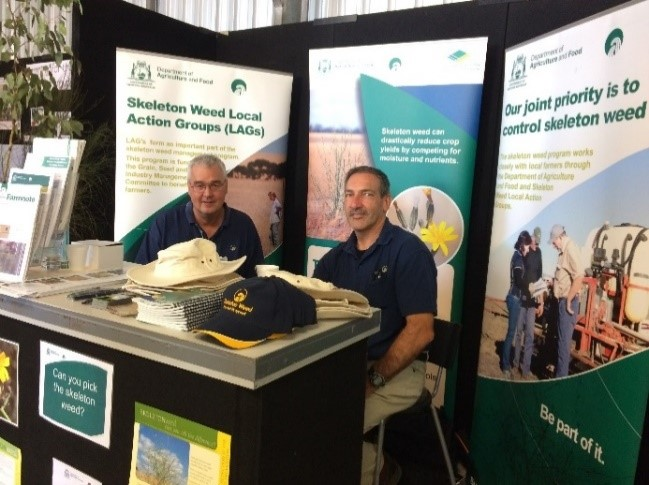
Program staff attend all the major machinery field days and farmer events – (Mingenew, Dowerin, Newdegate and Wagin). These are important in maintaining contact with landholders and is a great way for the Skeleton weed team to talk face-to-face with landholders.
Planned improvements to the program in 2018/19
A meeting of DPIRD staff, search contractors and Local Action Groups (LAGs) was held at the end of the 2017/18 search season to discuss changes to optimise the Program’s current operation.
Some of the main issues raised were:
- Concern over the lack of complete seed set control with summer treatments. This was a problem to landholders with large areas because the summer surveillance was too time consuming and impacted on other farm operations. It was suggested that the use of a single low rate application of picloram be applied with glyphosate as this had shown in research to give suppression of seed set for the entire summer.
Additional recommendations have been provided to landholders. - The restriction of grazing stubbles for at least six weeks prior to searching had also been an issue for landholders who relied on the stubbles for feed.
As a result it has been agreed to allow grazing up to four weeks prior to searching. - The program is operating satisfactorily where continuous cropping or short rotations were used. However, it was brought to attention that eradication was not being achieved as easily where landholders who derived their major income from sheep rather than cropping, and hence were using longer rotations, were finding that some plants were surviving in treated squares.It has been agreed to trial the use of a pre-cropping application of picloram.
- Some landholders have problems with “infested squares” becoming compacted and the chemical is not penetrating the soil profile deep enough to take out plant root systems.
The program will trial working these squares and treating with picloram. - The Management Guide has been reviewed and updated. It was also suggested to separate the guide into two sections, the first containing the biology, identification, legislative and search methods, and the second part the control recommendations. The first section is unlikely to change but control recommendations require regular reviewing. Hence the second part will be the only part needing regular reprinting. This will be a cost saving to the program.
The new 2018 “Management Guide” will be in this format. - Landholders have raised the issue of the full search required for Code 3 paddocks being at their cost.
This is an important search and must be done before the paddocks are released. The search assistance program will now be extended as a trial to Code 3 paddocks for 2018/19.
Findings – Program results at a glance
There was a significant increase in the “Infested area” and “Code 1 paddock area” in 2017/18.
This can be attributed to excellent growing conditions (late spring rains) in the Eastern Wheatbelt which resulted in vigorous plant growth up to flowering in Mid-December.
Many of the new finds are in the more heavily infested zones and are on properties where there has been higher than normal increase in re-infested paddocks. These events are not unique, but neither are they common. The important thing is that now these plants have been found they can be effectively treated.
The five year trends for the state and the agricultural regions are shown in Tables 2 and 3.
Infested properties
Contractors again searched the majority (65%) of the available “Code 1” area eligible for search assistance. A total of 90 newly infested properties were reported by landholders or found by the DPIRD and/or Local Action Group (LAG) staff undertaking targeted surveillance.
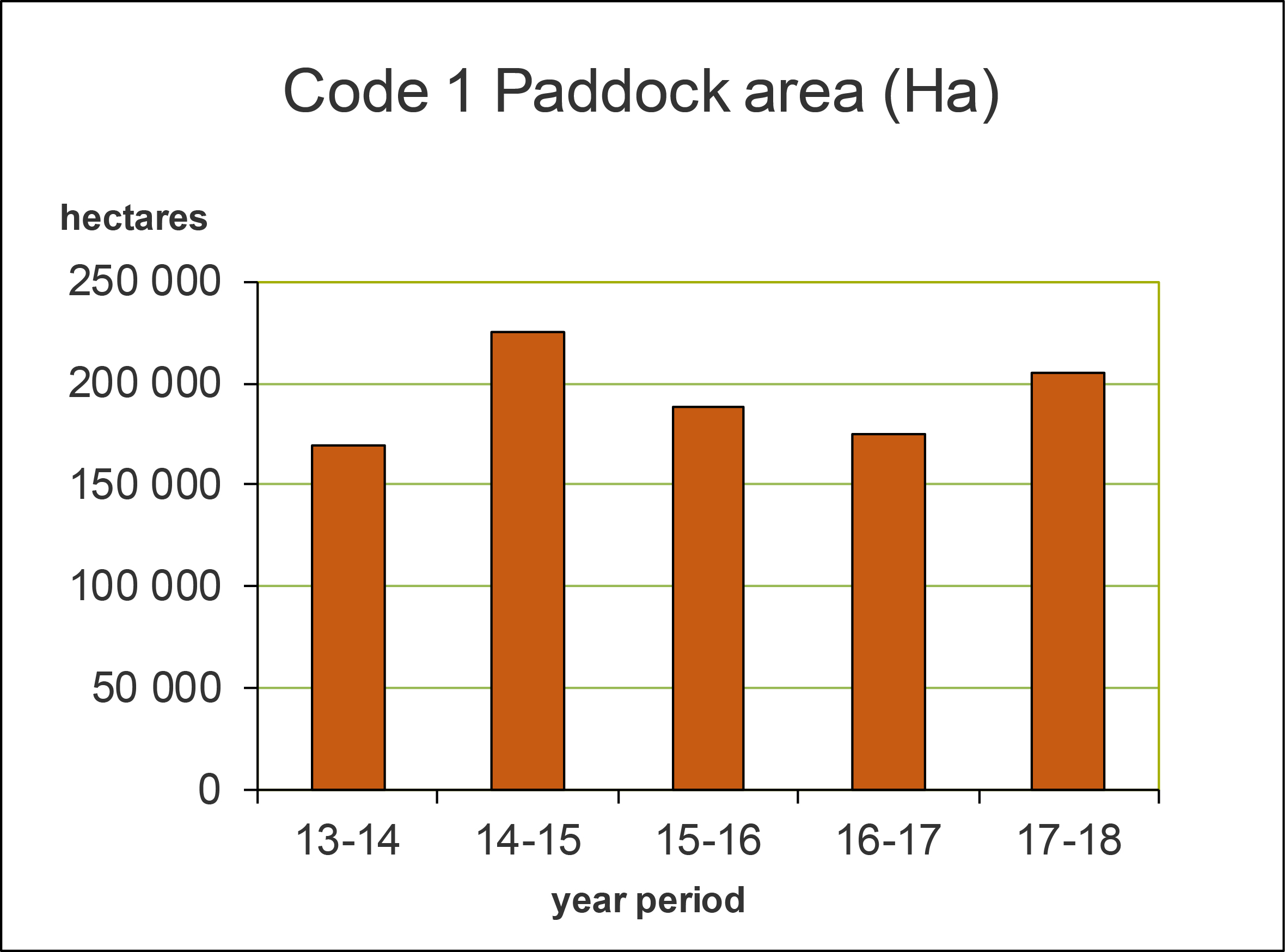
Figure 2 Area of Code 1 paddocks searched over the last five years
DPIRD and LAG staff audited all properties that were eligible, to have them removed from the infested list and Skeleton weed was eradicated on 28 properties in 2017/18. However, the net gain (new properties less released properties) was 62 properties and is a significant net gain on the previous year’s 20 new properties.
Although the overall number of infested properties continues to climb, it is at a relatively slow trend. The number of properties removed from the infested list is at a consistent level. These are particularly pleasing trends and a good indicator of the effectiveness of the program.
The Skeleton Weed Program continues to provide significant benefits to owners/managers of both infested and non-infested properties. Without a co-ordinated program aimed at controlling spread, Skeleton weed would now be much more abundant and widely established throughout the cereal growing districts.
Area searched
The total area searched in 2017/18 was approximately 367 000ha. The area of surveillance searching by landholders, DPIRD and LAGs was 67 000ha.
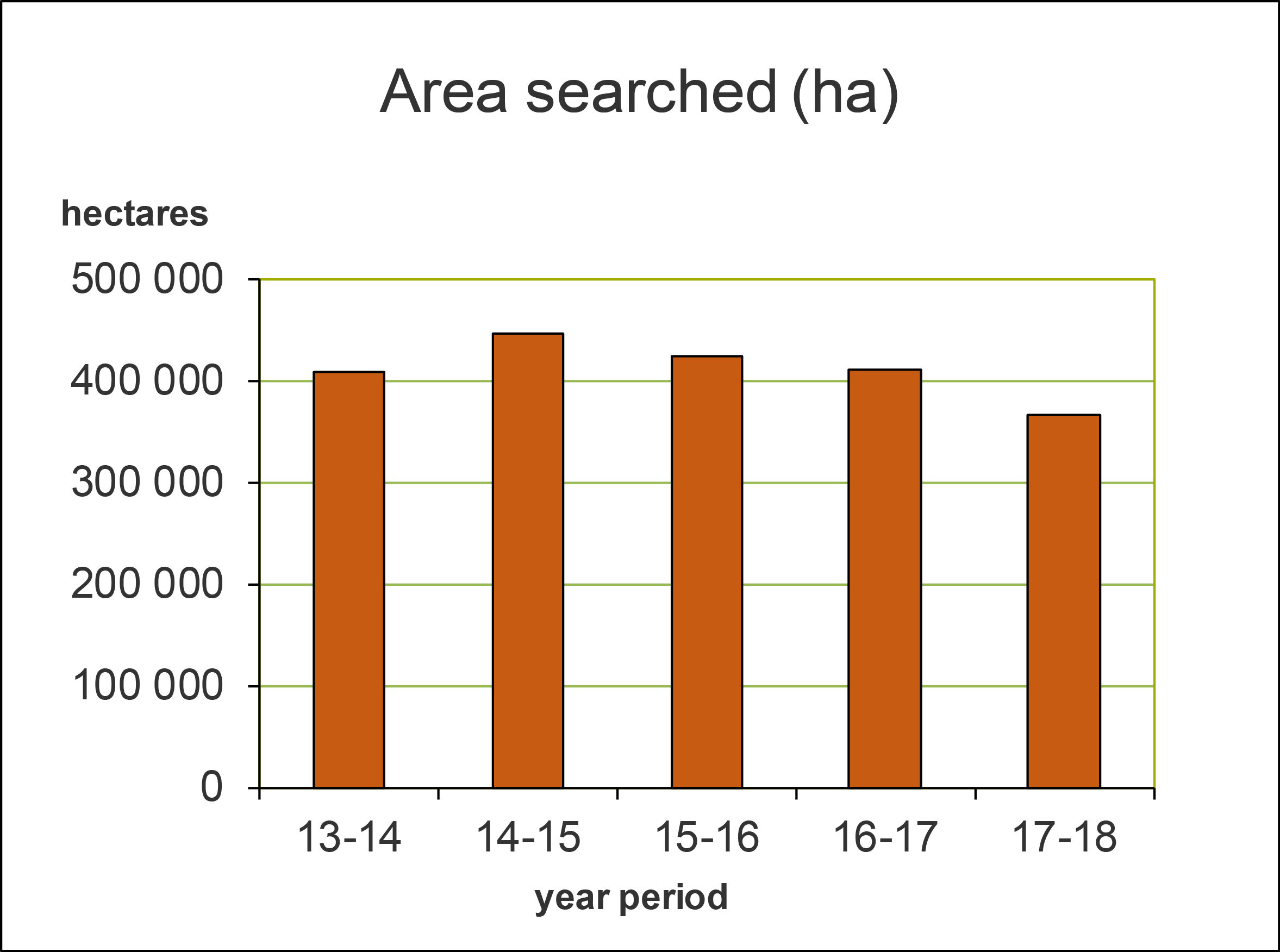
Figure 3 Total area searched by the program over the last five years
Contractors searched a total of 113 000ha of eligible ‘Code 1’ paddocks and new finds, and were paid $931 000 under the search assistance scheme. Landholders searched 61 000ha of eligible ‘Code 1’ paddocks and new finds, and received $245 000 in search assistance.
Infested area
The actual “infested area” of Skeleton weed is the area where skeleton weed plants are present, plus a 20m buffer. This is the area that will be treated for eradication in winter (Winter Treatment). There was 3,818ha recorded as infested with skeleton weed, a significant (30% increase) in 2017/18, from 2 348ha in 2016/17 (Figure 4). This can be related to seasonal conditions, but is also a reflection of the effectiveness of the Skeleton Weed Program, as the trend remains fairly level.
A map of the agricultural area showing the four (Figure 5) regions and distribution of all infested sites can be found at the end of this report.
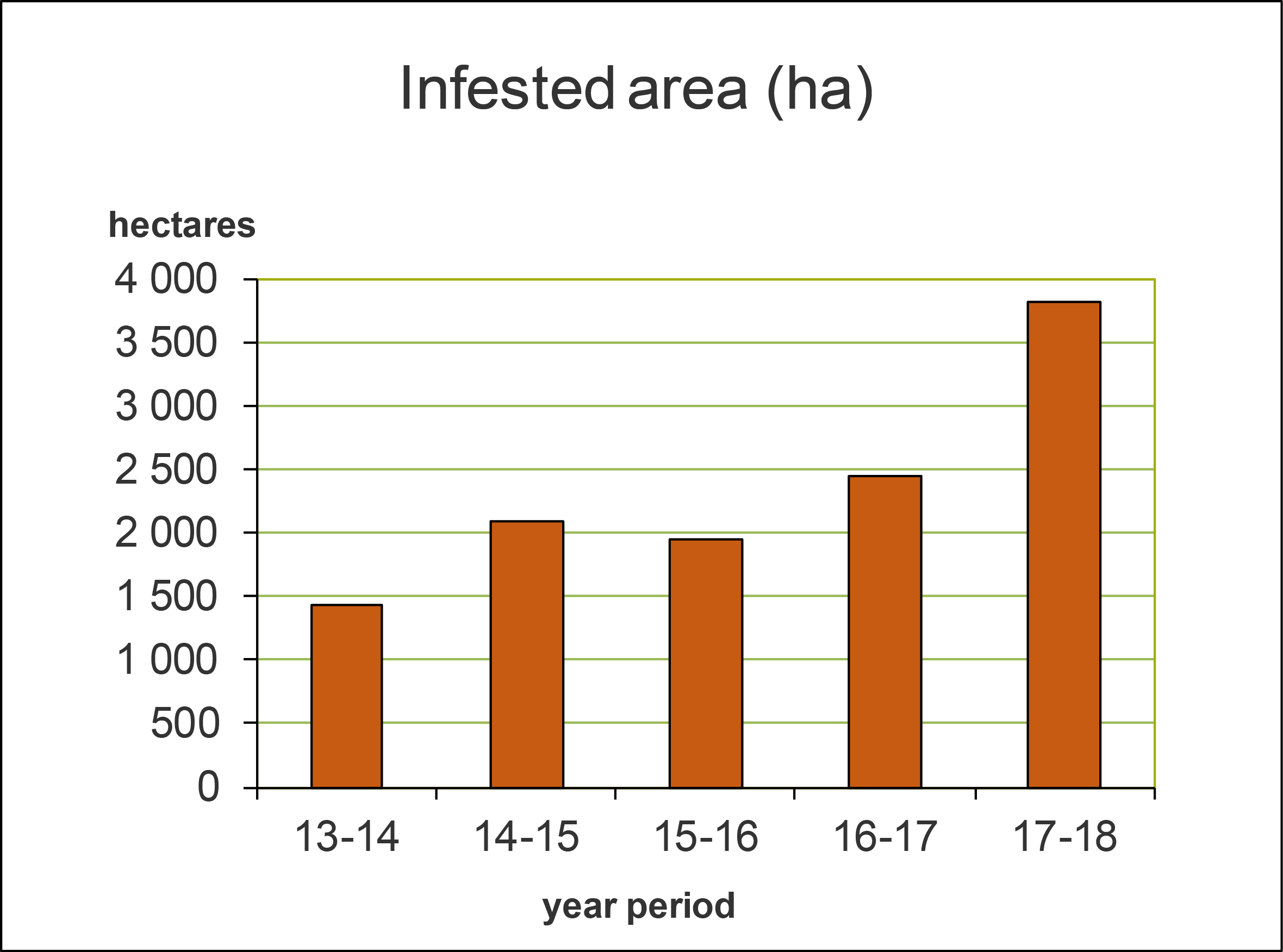
Figure 4 Actual area infested with Skeleton weed at the end of the search season
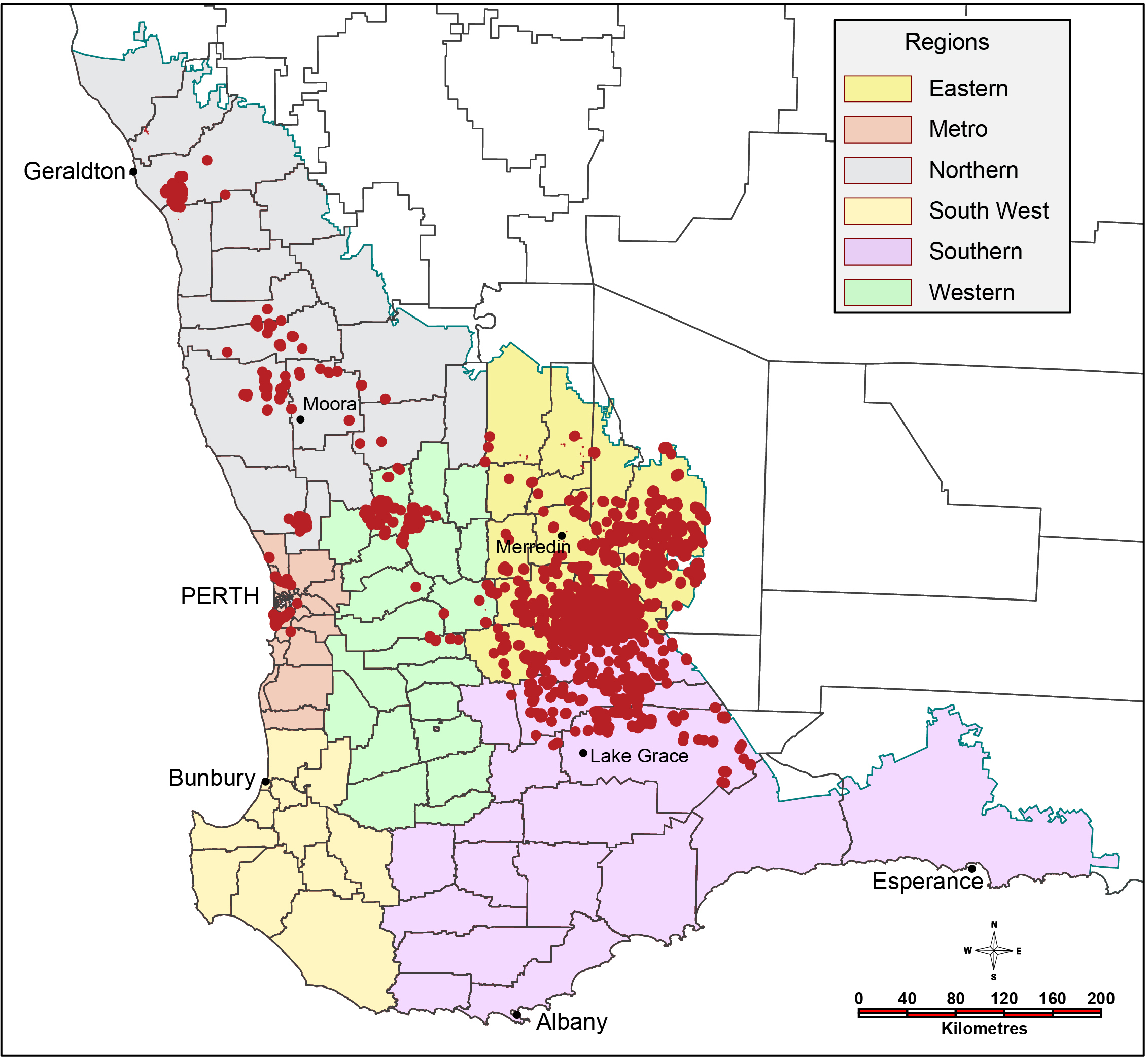
Figure 5 Map of Skeleton weed infestations in Western Australia as at 30 June 2018
Winter Treatments
A total of 3 818ha was recorded as infested during the 2017/18 search season and marked for winter treatment in 2018. Some 4,150ha was sprayed in winter 2018. This extra sprayed area can be attributed to additional “whole paddock” treatments with Lontrel®. There was also a slight increase in the cost of winter treatment in the 2017/18 winter spraying program, with the inclusion of the Yilgarn and Narembeen shires. This has been very well received by the growers in these shires and the surrounding shires.
All shires across the cereal growing districts are now under the same assistance program.
Key program indicators
Table 2 Statewide Skeleton Weed Program key indicators. Comparison between 2016/17 and 2017/18
| New infested area (ha) | Infested Area released | Area searched - (ha) | Code 1 paddocks infested area (ha) | Area under winter eradication treatment (ha) ** | |||||
|---|---|---|---|---|---|---|---|---|---|
| 2016/17 | 2017/18 | 2016/17 | 2017/18 | 2016/17 | 2017/18 | 2016/17 | 2017/18 | 2016/17 | 2017/18 |
| 2 531 | 51 975 | 36 724 | 33 250 | 301 239 | 299 055 | 175 447 | 205 735 | 2 348 | 3 818 |
* Excludes metropolitan area infestations and surveillance searching where no new infestations were detected.
** Some whole paddock “Lontrel” treatments by landholders not included.
Table 3 Overall key indicators for the 2017/18 Program by regions
| Region | New Infested | Infested Area | Area Searched | Code 1 Paddocks Infested Area | Area under Winter Eradication Treatment |
| Northern | 2 474 | 1 236 | 22 807 | 15 782 | 167 |
| Western | 3 768 | 1 303 | 19 878 | 15 357 | 392 |
| Eastern | 30 689 | 22 491 | 196 185 | 132 679 | 2 122 |
| Southern | 15 044 | 8 220 | 60 185 | 41 917 | 1 137 |
* Excludes metropolitan area infestations.
** Some whole paddock “Lontrel” treatments by landholders not included.
Table 4 Skeleton Weed Program key indicators by regions and zones. (2016/17 and 2017/18)
Northern Region
| New infested area (ha) | Infested area released - (ha) | Area searched (ha) | Code 1 paddocks infested area (ha) | Area under winter eradication treatment (ha) ** | |||||||
|---|---|---|---|---|---|---|---|---|---|---|---|
| Zone | Shires | 2016/17 | 2017/18 | 2016/17 | 2017/18 | 2016/17 | 2017/18 | 2016/17 | 2017/18 | 2016/17 | 2017/18 |
| Geraldton | Greater Geraldton, Chapman Valley, Northampton, Mingenew, Mullewa, Morawa, Three Springs, Irwin, Carnamah, Coorow | 150 | 1 613 | 1 631 | 641 | 14 223 | 12 810 | 10 117 | 8 879 | 238 | 87 |
| Moora | Moora, Victoria Plains | 140 | 101 | 0 | 0 | 1 532 | 1 658 | 1 532 | 1 307 | 18 | 10 |
| Wongan Hills | Wongan-Ballidu, Dalwallinu, Koorda, Perenjori | 36 | 522 | 111 | 0 | 1 920 | 1 920 | 1 201 | 1 171 | 7 | 4 |
| Chittering | Gingin, Dandaragan, Chittering | 198 | 238 | 729 | 595 | 8 862 | 6 419 | 7 697 | 4 425 | 91 | 66 |
|
| Regional totals | 524 | 2 474 | 2 471 | 1 236 | 26 537 | 22 807 | 20 547 | 15 782 | 354 | 167 |
* Excludes metropolitan area infestations. ** Some whole paddock “Lontrel” treatments by landholders not included.
Western Region
| New infested area (ha) | Infested area released - (ha) | Area searched (ha) | Code 1 paddocks infested area (ha) | Area under winter eradication treatment (ha) ** | |||||||
|---|---|---|---|---|---|---|---|---|---|---|---|
| Zone | Shires | 2016/17 | 2017/18 | 2016/17 | 2017/18 | 2016/17 | 2017/18 | 2016/17 | 2017/18 | 2016/17 | 2017/18 |
| Avon | Goomalling, Dowerin, Wyalkatchem, Toodyay, Northam, Cunderdin, Quairading, Tammin, Beverley and York | 46 | 3 645 | 494 | 1 253 | 11,111 | 19 205 | 6 771 | 14 734 | 70 | 391 |
| Narrogin | Brookton, Pingelly, Cuballing, Narrogin, (includes currently non-infested shires of Wandering, Williams and Wagin) | 0 | 123 | 0 | 50 | 1,040 | 673 | 940 | 623 | 19 | 1 |
|
| Regional totals | 46 | 3 768 | 494 | 1 303 | 12 151 | 19 878 | 7 711 | 15 357 | 89 | 392 |
* Excludes metropolitan area infestations. ** Some whole paddock “Lontrel” treatments by landholders not included.
Eastern Region
| New infested area (ha) | Infested area released - (ha) | Area searched (ha) | Code 1 paddocks infested area (ha) | Area under winter eradication treatment (ha) ** | ||||||||
|---|---|---|---|---|---|---|---|---|---|---|---|---|
| Zone | Shires | 2016/17 | 2017/18 | 2016/17 | 2017/18 | 2016/17 | 2017/18 | 2016/17 | 2017/18 | 2016/17 | 2017/18 | |
| Merredin | Mt Marshall, Mukinbudin, Westonia, Kellerberrin, Bruce Rock, Corrigin (Part), Trayning, Nungarin and Merredin | 878 | 10 739 | 8 245 | 5 705 | 56 557 | 53 209 | 29 191 | 33 694 | 287 | 585 | |
| Eastern | Narembeen and Yilgarn | 958 | 19 950 | 18 180 | 16 786 | 154 449 | 142 976 | 90 980 | 98 985 | 1 204 | 1 537 | |
|
| Regional totals | 1 836 | 30 689 | 26 425 | 22 491 | 211 006 | 196 185 | 120 171 | 132 679 | 1 491 | 2 122 | |
* Excludes metropolitan area infestations. ** Some whole paddock “Lontrel” treatments by landholders not included.
Southern Region
| New infested area (ha) | Infested area released - (ha) | Area searched (ha) | Code 1 paddocks infested area (ha) | Area under winter eradication treatment (ha) ** | |||||||
|---|---|---|---|---|---|---|---|---|---|---|---|
| Zones | Shires | 2016/17 | 2017/18 | 2016/17 | 2017/18 | 2016/17 | 2017/18 | 2016/17 | 2017/18 | 2016/17 | 2017/18 |
| Lakes | Kulin, Kondinin, Lake Grace, Dumbleyung, Wickepin, Corrigin (Part) and Ravensthorpe north | 125 | 15 044 | 7 334 | 8 217 | 50 577 | 59 992 | 26 835 | 41 823 | 412 | 1 137 |
| Southern | Defined by the DPIRD “Southern Region” - includes Esperance, southern Ravensthorpe | 0 | 0 | 0 | 3 | 968 | 193 | 183 | 94 | 2.2 | 0.2 |
|
| Regional totals | 125 | 15 044 | 7 334 | 8 220 | 51 545 | 60 185 | 27 018 | 41 917 | 414.2 | 1 137 |
* Excludes metropolitan area infestations. ** Some whole paddock “Lontrel” treatments by landholders not included.

